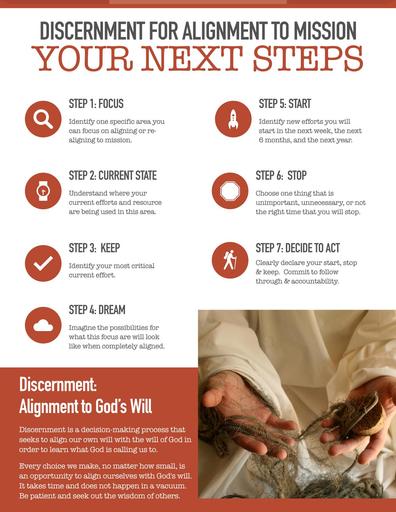For this reason a man shall leave his father and his mother / and be joined to his wife, / and the two shall become one flesh. / This is a great mystery, but I speak in reference to Christ and the Church (Ephesians 5:31-32).
St. Paul could not have been more correct. This Christian teaching—that marriage and the relationship between Christ and the Church, shed light on each other—remains “a great mystery.” What can it mean?
At the very least, it must mean that marriage is a far weightier matter than bridal magazines and television shows indicate. It also means that God himself made marriage, and had it in mind when he made two “opposite” sexes who are able to become “one flesh.” Finally, from the reference to Christ and his Church, we get the distinct impression that marriage—like the relationship between God and the People of God—might involve great sacrifice for the other, total fidelity, and not a few ups and downs.
The New Testament’s direct teachings on marriage—St. Paul’s above, and Jesus’ in Matthew 19:6 (“what God has joined together, no human being must separate”)—were prefigured in the Old Testament’s many allusions to the marital qualities of the relationship between God and Israel, right down to calling Israel an adulteress when she strayed from fidelity to God.
How far is this picture from our modern conversations about marriage which, when they are not about the gown or the “destination wedding,” still verge on the economic and the utilitarian? Not a week goes by that we don’t read about a new study or survey talking about young men and women making strategic decisions about marriage based on their educational plans, their incomes, and/or their desires to consume certain experiences and adventures before settling down to the adult life of marriage and children. Increasingly frequent, too, are stories or studies purporting to show the “death of marriage” on the grounds that a sexually-active single life or cohabitation are essentially superior, or that women would do better to enjoy their newly elevated incomes alone, or that fidelity is well-nigh impossible (and maybe not even desirable).
Christianity points to a life so different from this life of calculated self-interest that it is difficult to see how Catholics can wrap their minds around it while still living in this world. Any adequate reply will have at least one foot planted firmly in the ample modern data showing that the Catholic way of marriage “works” to support the flourishing of individuals, families and communities. It will have its other foot planted firmly in an understanding of the dignity to which God has called each of us, made in his image and likeness as male or female, and called to live as he lived, in love and service to the other unto death.
Starting with the last point, Saint Pope John Paul II could not have been clearer in his Encyclical letter The Gospel of Life (Evangelium Vitae, no. 81): “The meaning of life is found in giving and receiving love.” For most people, that meaning is discovered in marriage. Even today, about 80% of Americans marry by age 40. It is no surprise that John Paul II calls marriage “the primordial” (i.e., the first, most fundamental) “sacrament,” and the “central point of the 'sacrament of creation’” (Pope John Paul II, Wednesday Audience, Oct. 6, 1982). In other words, and simplified greatly, the authentic gift of self between a man and a woman in marriage is bound up with the mystery of Christ and the Church. In this sacrament, husband and wife make visible the invisible grace of the perpetual, fruitful love of Christ, who as Son of God belongs to an eternal communion of love known as the Trinity. God desired to enter into the most intimate communion with his creation by coming among us, as one of us—Jesus Christ, true God and true man—and by giving himself for the life of the world. Married couples manifest this “invisible reality” of communion through a lifetime of mutual, perpetual self-donation, which is also the source of procreation. 
It seems odd to modern ears, no doubt, that we talk about this very human, very common, highly imperfect experience of romantic and practical love we call marriage, as a glimpse of God. It takes some getting used to. But that is what we are called to do because that is what marriage is. Marriage is both a gift and a task (to borrow more language from St. John Paul II). Both St. John Paul II and Benedict XVI have reminded us further, and in gorgeous terms, that our dignity as human beings demands nothing less than what marriage is. In other words, when spouses say to each other “I love you, and I wish to have children with you,” nothing less than all their lives, nothing less than all their persons, will do.
Sadly for some, it is only on the occasion of the dissolution of a marriage that it becomes clear just how essential the other spouse’s love and fidelity was in securing a sense of security and self-worth. Yet most of us have been fortunate enough to witness a marriage in which the spouses actually achieve a level of mutual self- donation which makes the full meaning of marriage more clear than any description can manage. It opens our eyes to the possibilities.
It has also become quite apparent today that the Catholic “model” of marriage—faithful, exclusive, permanent and procreative—“works.” In fact, it is the model that Americans in general long for, whether Catholic or not. High school and college students regularly answer surveys on marital aspirations by ranking both lifelong marriage and parenting quite high among possible life goals. In fact, Americans who take pains to avoid some of the most common impediments to successful marriage— among them, cohabitation and nonmarital childbearing— are more likely to achieve a marriage that is lasting and includes children. Both they and their children then reap many of the advantages of marriage: marital and financial stability, emotional security and educational attainment, among many others.
Sadly, more and more researchers are discovering that other Americans are less likely to marry, more likely to cohabit, and far more likely to give birth to children outside of marriage than in past decades.
Even from a purely secular perspective, this is troubling. Researchers have written at length about how marriage introduces human beings to the possibility of loving “non-kin,” those who are not our blood relatives. They have discovered the association between learning to love a spouse and children sacrificially and wholeheartedly, and the development of self-discipline, generosity and altruism. And economic evidence has demonstrated in cold, hard numbers the extent to which marriage is the “fundamental cell of society.” In communities where marriage is weak, the economy suffers—and more family members, especially the very old and the young, require support from the state.
Marriage is not just one choice among many in a person’s life. It is not a mere contract with another person, more or less lasting, for an exchange of love and good times. It is not even merely a “status” that the state assigns to your relationship if you fulfill the legal requirements for entering into marriage.
Catholics hold that marriage is a vocation, a “call.” It is a way of life that offers continual opportunities to be in loving service to the other. Marriage has a way of calling us to make this happen, and of making us want it to happen. It is both a splendid reality and serious business.
It is not to be entered into in an unthinking way. The person you marry—and his or her salvation—is a permanent part of your own path to salvation. Clearly God is in the midst of it. Consider that the majority of those who marry still do hold onto one another until separated by death. And so, if you thought marriage was a grand calling, a dramatic part of existence, you would be right.
Helen M. Alvaré, Esq. is an Associate Professor of Law, George Mason University School of Law and is a consultant to the Bishops’ Committee on Pro Life Activities.
Excerpt from Bl. John Paul II, The Gospel of Life (1995), used with permission of Libreria Editrice Vaticana. All rights reserved. Scripture quotations, unless noted, are taken from the New American Bible with Revised New Testament and Revised Psalms © 1991, 1986, 1970 by the Confraternity of Christian Doctrine, Washington, D.C., and are used with permission. All rights reserved. Models used for illustrative purposes only. © Veer Images. All rights reserved.
Copyright © 2012, United States Conference of Catholic Bishops, Washington, D.C. Used with permission.


